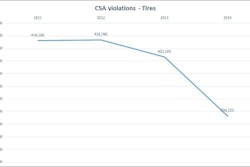When pulling your sales pitch together, here’s a quick refresher: Who, What and Why, Dollars, How, Close.
1. Who
Who are you and whom do you represent? Don’t assume customers know you!
2. What
Your mission is to find out what you are up against. Don’t assume that because the prospect is buying one line that you know everything there is to know about his deal.
- What lines, products, and/or service does the prospect have now?
- Does he buy from more than one distributor?
- Does he have more than one approved source for maintenance products?
- Are your products included in his PM program?
- How many units are serviced in this location?
- Would he be willing to take on a new line on a trial basis?
- Is this location buying any lines outside the corporate approved lines?
- What is the average monthly volume in the competing line?
Part two of the “What” step is what are you selling? And more importantly, don’t assume they know what they can do with it.
3. Dollars
This is the toughest step to get used to. How much money will be involved in buying or stocking our products and what the customer can expect in return?
- Reduced maintenance cost and downtime or longer product and service life are dollars.
- Consolidated lines allow the customer to carry fewer numbers for broader coverage on different kinds and models of equipment.
- This provides an adequate inventory for a smaller dollar investment that requires less space to stock. This frees up dollars and space.
[NOTE: Not all salesmen are convinced that talking about money should be part of the presentation.]
However, if you cannot explain how a customer will make money with your lines, you are leaving out the most important thing.
- Fleets are in the business of moving goods to make money.
- Distributors and jobbers are in the business of buying and selling parts to make money; if they weren’t selling parts, they would be selling some other commodity.
- Independent service garages are in the business of repairing vehicles to make money.
- Not one of them is in the business of operating a parts museum.
Know the economics faced by this customer, or you really have no story.
And, why put the money into the middle of the presentation?
- You are there to sell something. You know it. The customer knows it. Sooner or later, money is going to have to change hands.
- The longer you delay, the more the customer begins to wonder why. After a while becomes so preoccupied that he stops listening to anything else you have to say.
- The most common reason a customer declines to buy is money. If this is going to be a problem, get it out into the open as soon as possible so that you still have other program elements to talk about to help you save the sale.
- If you wait until the end and then the customer objects by saying “That’s too much money,” you have already laid out your whole program and now have nothing left with which to respond.
4. How
How will your program help him achieve the financial results you have promised?
There are many reasons:
| Product-related elements | Operational elements |
| Quality | Ease of ordering |
| Breadth and depth of line | Customer service hours |
| OEM acceptance | Local availability and fast delivery |
| Engineering flexibility | Order turnaround fill rate |
| Online or live technical assistance | Return goods policy |
| Marketing elements | Financial Elements |
| Field sales and training force | Dating on larger orders |
| Fleet survey assistance | Lift program |
| Technical clinics | Seasonal dating deals |
| Computer-assisted inventory | Inattentive credit department |
5. Close
The most common reason salesmen fail to get an order is that they do not ask for one. Try a test close that hinges on a minor point with an alternative:
- Would you like me to ship a complete inventory, or should we just bring in enough to try a test with one or two units?
- Would you like me to call the order in or just ship it as a regular order?
- Do you want me to write up an inventory, which would include coverage for the pick-up and delivery trucks, or just the trailer coverage for now?
Gaining commitments: With some buyers who buy but do not make the buying decisions alone (such as shift managers, a technical or safety committee, or a maintenance director) “getting the order” is really getting a commitment to continue the dialog, perhaps with another individual.
You need to gain commitments from the customer to continue to pursue the sale.
Commitments, like asking for the order, are based on a choice of time, quantity, or location.
If he says no and means it, you thank him for his time and ask if he would be good enough to explain his decision.
Bill Wade is a partner at Wade & Partners and a heavy-duty aftermarket veteran. He is the author of Aftermarket Innovations. He can be reached at [email protected].









